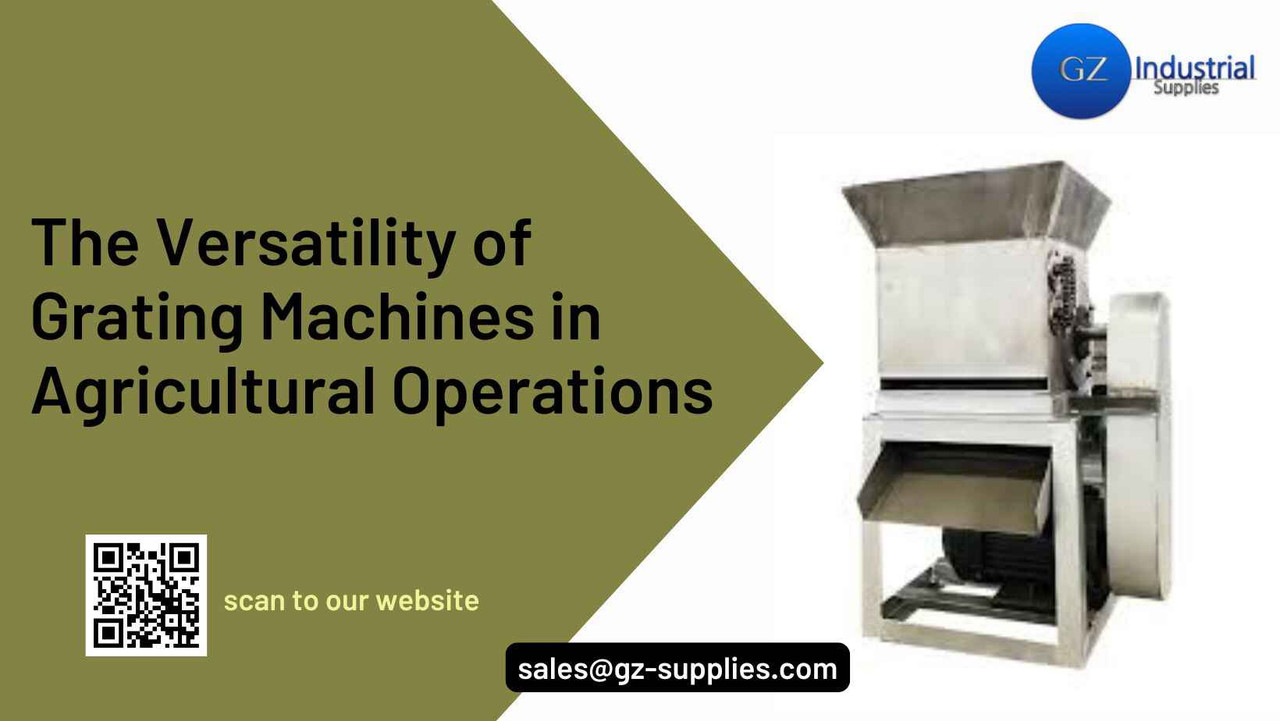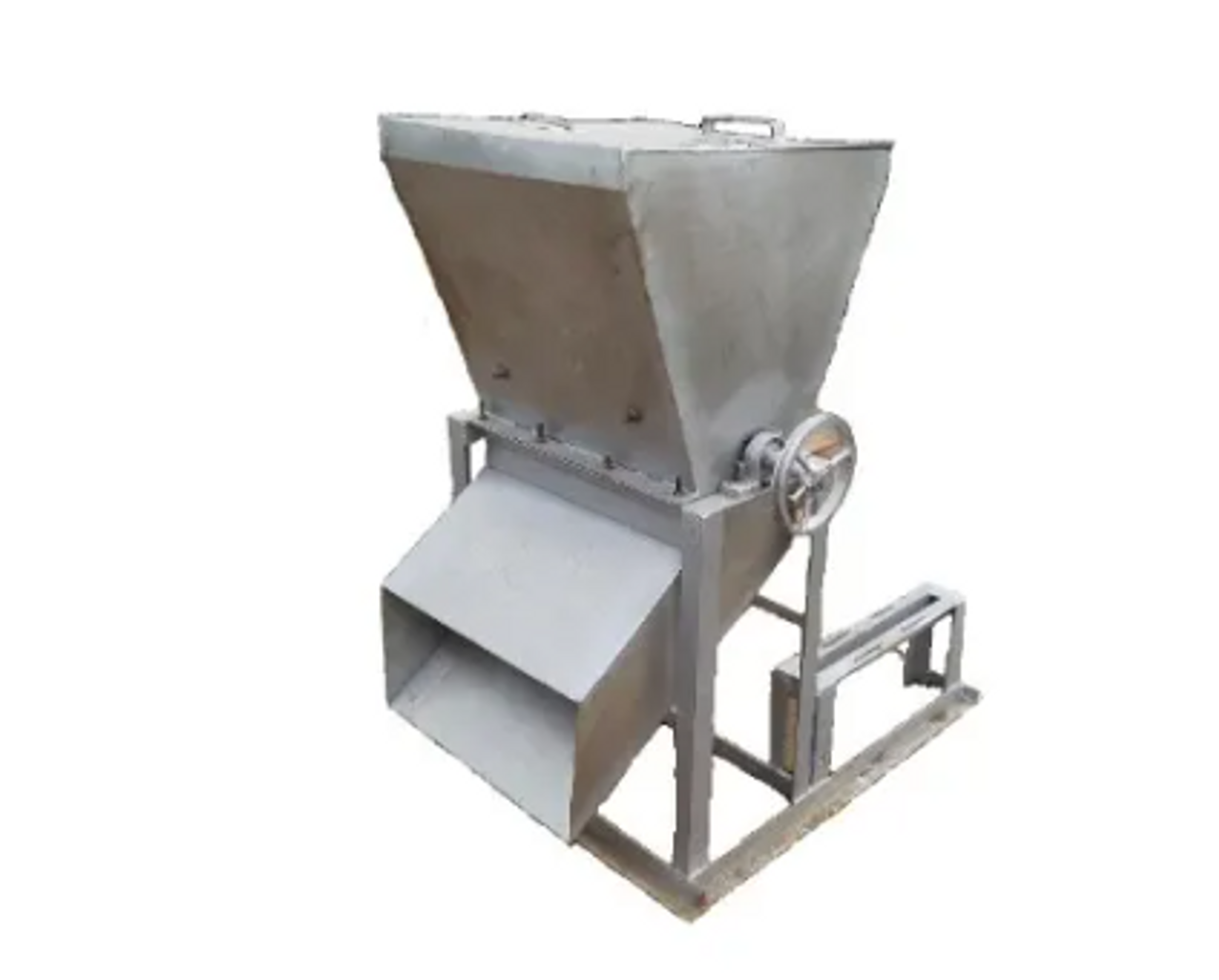The Versatility of Grating Machines in Agricultural Operations
Key Takeaway
- Grating machines enhance productivity: By automating processes like shredding and slicing, they significantly reduce manual labor and time spent in agricultural operations.
- Improved consistency: These machines provide uniform grating results, ensuring higher-quality output for a variety of crops such as cassava, yams, and other root vegetables.
- Adaptable for multiple applications: Grating machines can be used in food processing, animal feed production, and bioenergy generation, showcasing their wide-ranging uses in agriculture.
Introduction
Grating machines have become an essential tool in agricultural operations, offering versatility that enhances efficiency across multiple stages of production. From processing root crops like cassava and yams to shredding materials for animal feed or bioenergy production, these machines significantly reduce manual labor and time, providing consistent results.
Their adaptability makes them ideal for both small-scale farmers and large agribusinesses, as they can handle a variety of tasks with precision. Grating machines also streamline post-harvest processing, turning raw agricultural produce into market-ready products more efficiently, minimizing waste and maximizing value. This versatility not only boosts productivity but also ensures cost-effectiveness in agricultural operations.
Importance in Modern Agriculture
In today's fast-paced agricultural landscape, efficiency and productivity are paramount. Grating machines play a crucial role in streamlining food processing, allowing farmers to reduce the time and labor needed for manual tasks. As farming operations scale up, the adoption of advanced machinery, including grating machines, has become essential for meeting market demands and ensuring food safety. This evolution not only enhances output but also supports farmers in producing high-quality products that can compete in global markets.
Stainless Gasoline Grating Machine 6.5hp Hellog
Types of Grating Machines Used in Agriculture
1. Manual Grating Machines
Manual grating machines are typically operated by hand and are ideal for small-scale farming operations. They are simple in design, often lightweight, and do not require any power source, making them accessible and easy to use in remote areas. Farmers may opt for manual machines for smaller harvests or specific tasks where precision is crucial. While they require more time and effort, these machines can still produce excellent results for niche markets or family-run farms.
2. Electric Grating Machines
Electric grating machines have revolutionized the efficiency of food processing in agricultural settings. Powered by electricity, these machines can handle larger quantities of produce in a shorter time frame, making them suitable for mid to large-scale farming operations. They come equipped with various features such as adjustable blade settings and multiple speed options, allowing farmers to customize the grating process according to the type of produce being processed. This adaptability not only speeds up the operation but also enhances the consistency of the final product.
3. Automated or Smart Grating Machines
The latest advancements in technology have given rise to automated or smart grating machines that integrate artificial intelligence and the Internet of Things (IoT). These machines can be programmed to perform specific tasks with minimal human intervention, allowing for significant productivity gains. They often come equipped with sensors that monitor performance and provide real-time feedback, ensuring optimal operation. In large-scale farming operations, where efficiency is crucial, these smart machines can enhance overall productivity and reduce waste.
Applications of Grating Machines in Agricultural Processing
1. Root Crops
Grating machines are extensively used in processing root crops such as cassava, yams, and potatoes. These crops often require extensive preparation for various culinary applications, including flour production and traditional dishes. By grating these root vegetables, farmers can significantly enhance their market readiness, transforming bulky raw products into easily manageable forms. The grated produce can then be used in the production of snacks, flours, or other value-added items, increasing profitability.
2. Fruit and Vegetable Processing
Fruits and vegetables can be labor-intensive to process manually, especially for products requiring shredding or pulping. Grating machines simplify this task, allowing for quick processing of ingredients for juices, jams, and other processed foods. By utilizing grating machines, farmers can maximize the use of their produce, minimize waste, and create a variety of products that appeal to diverse consumer preferences. This capability not only expands their product line but also enhances their market reach.
3. Dairy Industry
In the dairy sector, grating machines are instrumental in cheese-making processes, particularly for shredding curds. This application is critical in producing a uniform texture and consistency in cheese products, which is essential for quality control. Grating machines can also be used in the preparation of other dairy-related products, helping streamline operations and improve efficiency in dairy processing plants.
4. Animal Feed Production
Grating machines are increasingly utilized in the production of animal feed, where they help break down fibrous crops into digestible forms. This process is vital for creating silage and fodder that provide essential nutrients to livestock. By improving the digestibility of feed materials, grating machines contribute to better animal health and, consequently, enhanced productivity in livestock farming.
Grating machine 1ton/hr Hellog
Advantages of Grating Machines in Agricultural Operations
1. Increased Efficiency
One of the primary benefits of grating machines is their ability to significantly enhance efficiency in agricultural processing. By mechanizing the grating process, farmers can save a considerable amount of time that would otherwise be spent on manual labor. For instance, a grating machine can process large quantities of produce in a fraction of the time it would take for a human worker. This efficiency translates into quicker turnaround times for products, allowing farmers to meet market demands and reduce the risk of spoilage.
2. Precision and Consistency
Grating machines provide a level of precision that is difficult to achieve with manual methods. The uniformity in size and texture of grated products ensures that they meet industry standards and consumer expectations. Consistent grating also improves cooking and processing outcomes, as uniformly grated materials cook more evenly. This precision not only enhances the quality of the final products but also boosts consumer confidence in agricultural goods.
3. Labor Savings and Cost-Effectiveness
Investing in grating machines can lead to significant labor savings. By reducing the need for manual grating, farmers can reallocate labor to other critical areas of their operations, such as planting and harvesting. Over time, the initial investment in machinery can pay off through decreased labor costs and increased productivity. Moreover, the ability to produce more products with less time and effort can lead to improved profitability, making grating machines a cost-effective solution for many agricultural businesses.
4. Versatility Across Crops and Processes
Grating machines are versatile tools that can handle a variety of agricultural products. From root vegetables to soft fruits and dairy products, these machines can be adapted to process different materials with minimal adjustments. This flexibility allows farmers to diversify their operations and produce a wider range of products, catering to various markets. Additionally, the ability to switch between different types of grating processes makes these machines valuable assets in an evolving agricultural landscape.
Challenges and Considerations in Using Grating Machines
1. Maintenance and Durability
While grating machines offer many advantages, they also come with maintenance requirements. Regular upkeep is essential to ensure optimal performance and longevity of the machines. Farmers must be prepared to perform routine checks, replace worn parts, and keep the machines clean to avoid contamination of processed products. Understanding the maintenance needs and costs involved is crucial for farmers looking to invest in this equipment.
2. Energy Consumption
Electric grating machines, while efficient, can also contribute to higher energy consumption, which may be a concern for some farmers, especially those operating in remote areas with limited access to electricity. It's essential to consider the energy requirements of these machines and explore options for energy-efficient models or alternative power sources, such as solar energy, to minimize operating costs.
3. Skill Requirements
As grating machines become more advanced, the skills required to operate them can also increase. Farmers may need training to effectively use and maintain these machines, particularly for automated models with sophisticated controls. This necessity for technical skills can pose a challenge, especially for smaller farms or those in regions with limited access to training resources.
4. Initial Costs and Accessibility
The upfront investment in grating machines can be a barrier for some farmers, particularly smallholders with tight budgets. It's important to assess the potential return on investment and explore financing options or government grants that might be available to help offset initial costs. Additionally, ensuring access to quality machinery and support services is vital for successful implementation.
Cassava Grating Machine
Future Trends in Grating Machines for Agriculture
1. Technological Innovations
The future of grating machines in agriculture is set to be shaped by rapid technological innovations. Emerging technologies, including artificial intelligence and automation, are paving the way for more advanced grating solutions. These innovations can enhance precision, reduce waste, and optimize processing times. Smart grating machines that integrate data analytics will allow farmers to monitor performance in real-time, helping to identify areas for improvement and ensure consistent product quality.
2. Sustainable Agriculture and Energy Efficiency
As the agricultural sector increasingly focuses on sustainability, energy-efficient grating machines will play a vital role. The push towards eco-friendly farming practices calls for machinery that minimizes energy consumption while maximizing output. Innovations such as solar-powered grating machines or those designed for optimal energy use will help farmers reduce their carbon footprint and contribute to a more sustainable agricultural future.
3. Integration with Larger Agricultural Systems
The integration of grating machines with other agricultural systems will enhance their functionality and effectiveness. As smart farming technologies continue to evolve, grating machines will likely become part of a broader ecosystem that includes harvesting, sorting, and packing operations. This holistic approach will streamline agricultural processes, reduce labor costs, and improve overall efficiency, allowing farmers to focus on what they do best—growing quality produce.
Frequently Asked Questions
1. What types of crops can be processed using grating machines?
Grating machines can process a variety of crops, including root vegetables (like cassava and potatoes), fruits, vegetables, and dairy products. Their versatility allows them to cater to different agricultural needs.
2. How can grating machines improve the efficiency of my farm?
Grating machines significantly reduce the time and labor required for manual processing, allowing you to process larger quantities of produce quickly. This efficiency helps meet market demands and reduces the risk of spoilage.
3. Are there energy-efficient models available for grating machines?
Yes, many manufacturers offer energy-efficient grating machines designed to minimize power consumption while maintaining optimal performance. Additionally, options such as solar-powered models are becoming more available.
4. What maintenance is required for grating machines?
Regular maintenance includes cleaning the machines, checking for wear on blades, and performing routine inspections to ensure all components function correctly. Proper upkeep is essential for longevity and consistent performance.
5. Where can I purchase high-quality grating machines?
You can find a wide selection of grating machines at GZ Industrial Supplies, which offers various models suitable for different agricultural needs. Visit GZ Industrial Supplies to explore your options and enhance your agriculture
Related Articles
Why Grating Machines are Essential for Modern Agriculture
Where to buy cassava grating machine in Nigeria, Near me
How to use a cassava grating machine
Conclusion
Grating machines have proven to be versatile and invaluable tools in agricultural operations. From increasing efficiency and consistency to enabling the production of a diverse range of products, these machines play a crucial role in modern farming practices. Their ability to adapt to various crops and processes makes them essential for farmers looking to enhance productivity and profitability.
As technology continues to advance, the role of grating machines in agriculture is expected to expand further. With ongoing innovations aimed at improving efficiency, sustainability, and integration into smart farming practices, these machines will remain at the forefront of agricultural development.
Take your farm to the next level! Check out GZ Industrial Supplies for versatile grating machines that simplify post-harvest processing and improve your output.











